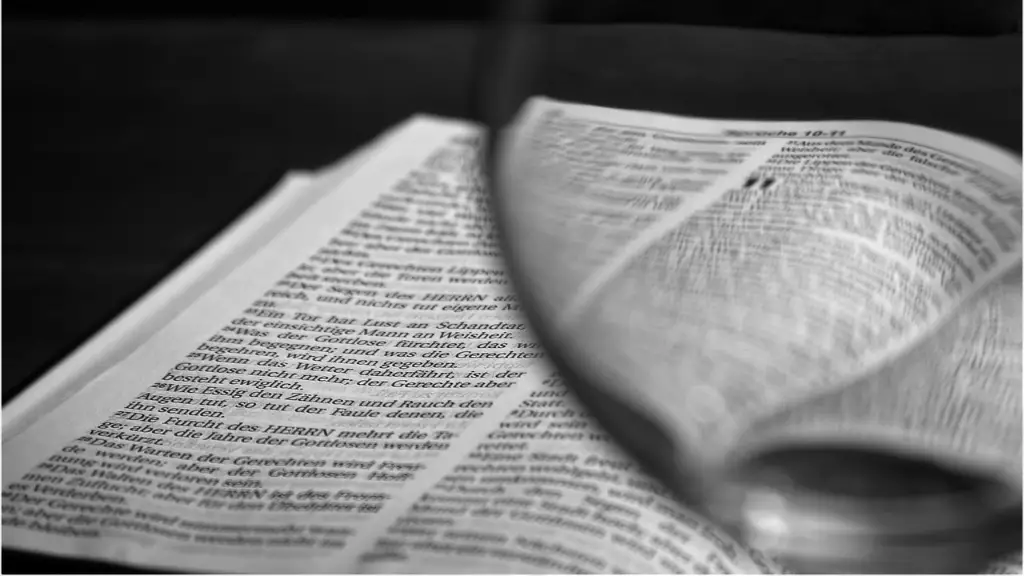Definition of a Catholic Bible
A Catholic Bible is a collection of books used by the Catholic Church as the authoritative scriptures for its traditional beliefs. It is divided into two sections: the Old Testament and the New Testament. The Old Testament is made up of works that were written before the life of Jesus, while the New Testament is composed of books about his life, death and resurrection. The Catholic Church recognizes the Bible as the foundation of Christian faith and life.
Versions Of The Catholic Bible
The most commonly used versions of the Catholic Bible are the Latin Vulgate and the Douay-Rheims Bible. The Latin Vulgate was originally written in Latin by St. Jerome around 400 AD, and it is the most frequently quoted Bible in the Catholic Church. The Douay-Rheims Bible, published in 1609, is an English translation of the Latin Vulgate. It is the most widely used English version of the Catholic Bible.
In addition, there are several newer translations of the Catholic Bible that have been approved by the United States Conference of Catholic Bishops. These include the New American Bible and the New Jerusalem Bible. The New American Bible is based on the Revised Standard Version (RSV), and it was the first translation to incorporate gender-inclusive language. The New Jerusalem Bible is a more literal translation of the original Hebrew and Greek texts, and it is considered to be the most accurate English translation of the Catholic Bible.
Content of the Catholic Bible
The Catholic Bible includes all of the books that are found in the Jewish Tanakh, which is made up of the Jewish Bible, or Hebrew Scriptures. It also includes several books of the Greek Septuagint, which was written during the intertestamental period. These books are found in the deuterocanonical books, or the Apocrypha. The Apocrypha include 1 Maccabees, 2 Maccabees, Tobit, Judith, Wisdom, Sirach (Ecclesiasticus), Baruch, and 1-3 Esdras.
The New Testament of the Catholic Bible also includes 27 books. These books were composed by early Christian writers, and they outline the life and teachings of Jesus Christ. The books are Gospels (Matthew, Mark, Luke, and John), Acts, Letters of St. Paul (Romans, 1-2 Corinthians, Galatians, Ephesians, Philippians, Colossians, 1-2 Thessalonians, 1-2 Timothy, Titus, Philemon), the Letter to Hebrews, the General Letters (James, 1-2 Peter, 1-3 John, Jude), and the Book of Revelation.
The Canon of the Catholic Bible
The books of the Catholic Bible were selected and assembled by early church leaders over the centuries. In 1546, the Council of Trent issued a formal list of accepted books and the doctrines of the Catholic Church. This was the first formal canon of the Bible that was used by the Catholic Church. It included all of the books of the bilingual Septuagint edition, which included both the Greek and the Hebrew texts. This is why the Catholic Bible includes the deuterocanonical books that are not part of the Protestant Bible.
The Authority of the Catholic Bible
The Catholic Church views the Bible as the divinely inspired word of God. The Church teaches that the Bible contains the revealed truth of God and that it is to be interpreted by the bishops and Magisterium as the living Word of God. As a result, the Catholic Church emphasizes the importance of the Study of Sacred Scripture and the ongoing conversation between scholars and theologians about how to interpret and apply the teachings of the Bible in the context of modern life.
The Use of the Catholic Bible in Church Life
The Catholic Bible is used by the Church in a variety of ways. It is often read in services, used for personal spiritual growth, discussed in Sunday school classes, used for study and prayer groups, used to create liturgies, and used as a source of moral guidance. The Bible is also one of the sources of Catholic doctrine and is used in theological exploration, education, and catechesis.
How the Catholic Bible Has Changed Over Time
The Catholic Bible has changed over the centuries as the understanding and interpretation of it has evolved. For example, in 1965, the Second Vatican Council declared that the Church recognizes the divine origin of the whole Bible, including the deuterocanonical books that are not in the Protestant Bible. As such, the Catholic Bible is accepted as a reliable source of truth and authority for Catholics, and it provides spiritual guidance to millions of people around the world.
What Language is the Catholic Bible Written in?
The Catholic Bible is written in a variety of languages, including Latin, Greek, Hebrew, and Aramaic. However, the most common language for the Catholic Bible is Latin, as it is the official language of the Catholic Church. The Latin Vulgate was the official version of the Bible for the Catholic Church until the Second Vatican Council in 1965. Since then, translations of the Bible into other languages have been encouraged, and they have become increasingly popular with Catholics.
Catholic Bible Study Resources
The Catholic Church provides many resources to facilitate Bible study and help Catholics understand the Scriptures and their spiritual and moral implications. The Church offers catechetical instruction and Bible studies, as well as print and digital resources to help Catholics learn about the Bible and its teachings. Additionally, many Catholic parishes offer scripture study groups and classes for people of all ages.
Why is it Important to Study the Catholic Bible?
For Catholics, studying the Bible is essential to developing a deeper understanding of God and growing in faith. Through Bible study, Catholics can learn more about God’s will, their own personal faith journey, the teachings of Jesus, and the history of the Church. Bible study also provides insight into the virtues and values that Catholics should strive towards, as well as instruction on how to live a moral life.


